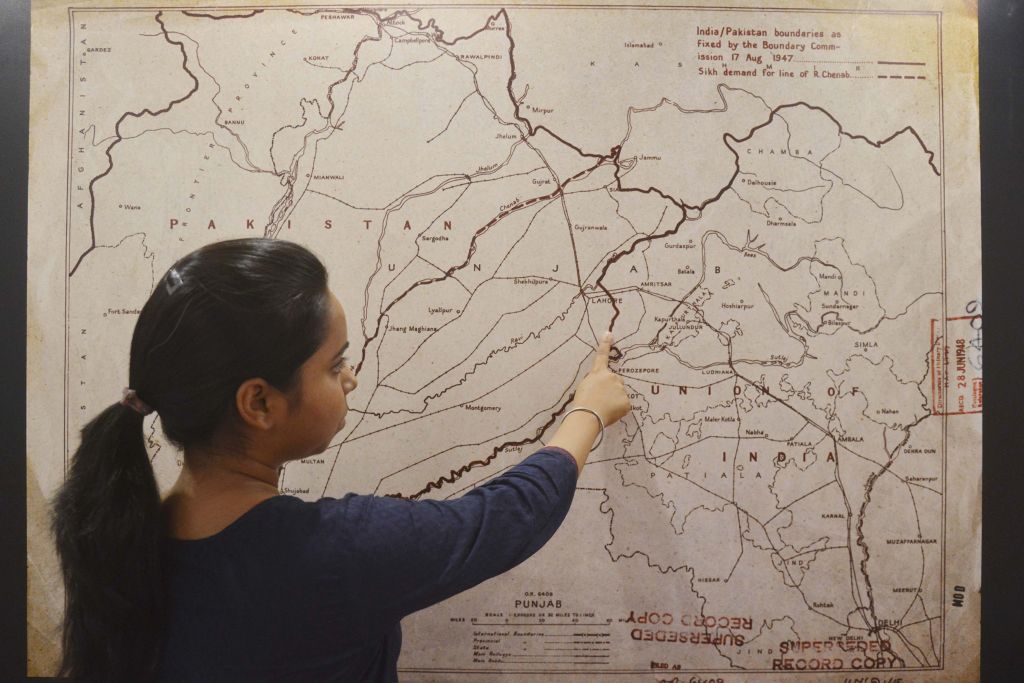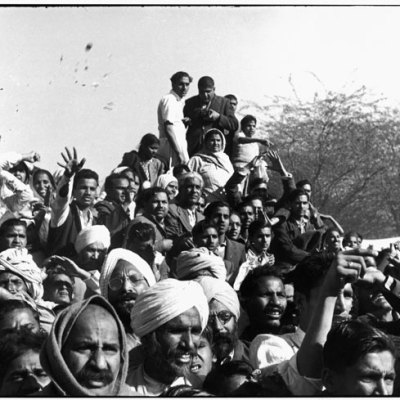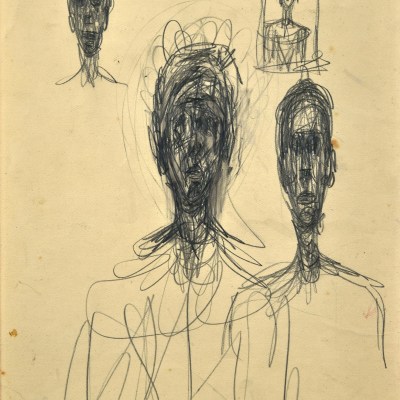Seventy years and two days after India won independence from British rule in 1947, the Partition Museum opens in Amritsar on 17 August. The city is best known for the Sikhs’ most holy shrine, the Golden Temple, which draws more visitors than the Taj Mahal. Just 15 minutes’ drive away is the border with Pakistan and, beyond that, it is a 30-minute drive to Lahore. The museum is an apt location to take a close look at a moment in history that continues to be sensitive for both Indians and Pakistanis and debated globally by historians.
When India won freedom on 15 August 1947, two big chunks of land to the east and west of it were not included within its boundaries. They became a new country, Pakistan (the eastern part later broke off to become Bangladesh). There were therefore two new international India-Pakistan borders. Over the next six months it is generally accepted that some 10–14 million people, terrified by the possible consequences of living under governments unsympathetic to their religion, migrated across those borders amid horrendous rioting, bloodshed and rape, to become refugees. At least a further 800,000 were brutally killed. It was probably the largest and most violent human migration in history outside war or famine. It resulted in epic displacement recorded by, among others, the news photographer Henri Cartier-Bresson. To this day, the wounds are not fully healed.
The reason for the museum’s opening date, 17 August, is poignant. On Independence Day, 15 August, the hastily-assembled Boundary Commission – led by the British lawyer Cyril Radcliffe and tasked with equitably dividing 175,000 square miles of territory containing 88 million people – had not finalised their decisions on the precise border lines. That came two days later. So, on Independence Day itself several million people had no idea to which country they belonged.
A visitor looks at a map of the India-Pakistan boundaries as fixed by the boundary commission on 17 August, 1947 at the Partition Museum in Amritsar. NARINDER NANU/AFP/Getty Images

It is a brave group who attempts to set out for public consumption the pre- and post-partition story in a way that might be acceptable to all sides. The Arts and Cultural Heritage Trust (TAACHT), a UK non-profit taking inspiration from Holocaust museums around the world, has led the project, working with the government of Punjab state and the London School of Economics whose founders Sidney and Beatrice Webb initiated a long-lasting close bond with India on their visit in 1911–12. The British Library is among the advisors. Financing is through donations. In 2016 there was a low-key opening of the museum, probably a wise decision. Now, confident it has hit the right note, the museum has its formal inauguration.
With some irony, it is housed in Amritsar’s handsome British-built Town Hall (completed 1870), whose recent restoration is part of an extravagant beautification of the ancient walled city, apparently partly inspired by the Vatican City’s arrangements for visitors. The huge marble-paved Heritage Street starts at the Town Hall, takes in the infamous Jallianwala Bagh (site of the shameful 1919 massacre by the British), statues of Sikh hero Ranjit Singh and other local heroes, some cleaned-up bazaars, and ends with the climactic experience of the Golden Temple complex, one of the most serene places in all of India. Amritsar’s core now sparkles for the 440th anniversary of its founding by the fourth Sikh guru, Ram Das, in 1577.
Photo courtesy the Partition Museum

The soft opening of one string of rooms in the Partition Museum gave a glimpse of how carefully the museum is tackling its subject. Avoiding sentimentality and judgement, the displays feature documents, photographs, short films and objects that allow the events and people to speak for themselves. Radcliffe’s dilemma is recorded with maps showing optional border lines, his own reports and, most fascinating of all, a much later interview with him as an old man considering whether he could have made different decisions. There are Governor-General Mountbatten’s surprisingly insightful reports, photographs of vacant-eyed refugees, and plain-speaking oral histories. The simplicity and directness made these opening displays a powerful experience which the much bigger completed museum may well amplify.
The museum’s director, Kishwar Desai, is clear about the museum’s aims. It is not merely to examine the pre- and post-partition era through the memories of the people, to record the losses and sorrows of the great divide which led to mass killings and displacement. Desai has a greater goal, too. She wants the museum to educate all people on the long-lasting perils of a tragedy that was neither inevitable nor necessary. A timely reminder.
Tree of Hope at the museum’s soft opening on 24 October 2016. Visitors are encouraged to write their memories and comments on paper leaves and hang them on the branches. Photo courtesy Partition Museum

The Partition Museum, Amritsar, is inaugurated 17 August 2017.


